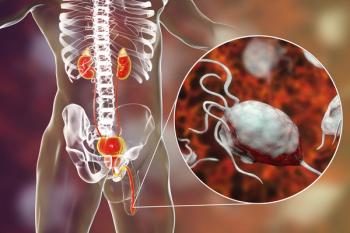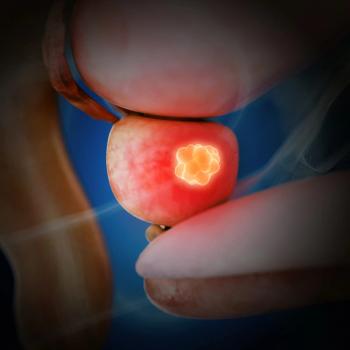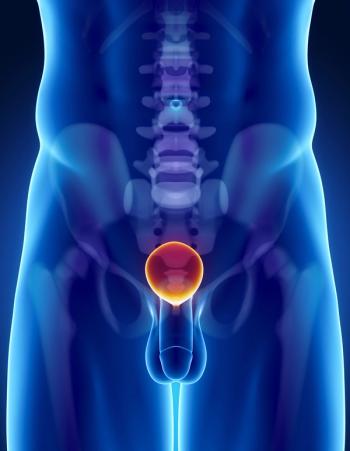
Oncology NEWS International
- Oncology NEWS International Vol 19 No 6
- Volume 19
- Issue 6
Excess weight, smoking may influence risk of disease relapse after prostate cancer treatment
Cancer survival notwithstanding, patients must still be encouraged to maintain a healthy lifestyle to help avoid progression.
ABSTRACT: Cancer survival notwithstanding, patients must still be encouraged to maintain a healthy lifestyle to help avoid progression.
While it is a given that everyone should practice weight control and avoid smoking, prostate cancer patients may want to make a particular effort: Researchers have suggested that these patients are less likely to experience disease recurrence by staying trim and not lighting up.
CORINNE JOSHU, PHD, MPH
"By avoiding obesity and weight gain, men with prostate cancer may be able to both prevent recurrence and improve overall well-being," said Corinne Joshu, PhD, MPH, an epidemiologist and teaching assistant at the Bloomberg School of Public Health at Johns Hopkins University in Baltimore.
Dr. Joshu and colleagues identified 2,498 men diagnosed with clinically localized prostate cancer who underwent prostatectomy at Johns Hopkins Hospital from 1993 to 2006. In August 2009, they had thorough information on 1,337 men who had completed questionnaires on self-reported height, weight, and physical activity levels for five years before diagnosis and four years following treatment.
The men were also followed annually by their surgeons for prostate cancer recurrence, which was defined as confirmed prostate-specific antigen re-elevation of 0.2 ng/mL, local recurrence, metastasis, or death. The mean clinical follow-up time was 7.3 years.
"We found that at five years before surgery, as compared with normal weight men, men who were obese did not have any risk of recurrence," she said. "However, at one year after (surgery), men who were obese as compared to normal weight did have an increased risk."
In looking at changes in weight following surgery, Dr. Joshu pinpointed 2.2 kilograms (about five pounds) as the key number. "Men who gained more than five pounds from five years before surgery to one year after surgery were at a twofold increased risk of prostate cancer recurrence as compared with men who maintained their weight (P = .02)," she said.
However, physical activity appeared to attenuate the risk in men who were obese. So even when a man was obese, if he engaged in more than five hours a week of physical activity, the risk of recurrence was not statistically different from that of men who were normal weight. But once again, if a man gained weight from five years before surgery to one year after surgery, physical activity did not reduce the risk (AACR 2010 abstract 883).
In a second study, Jing Ma, MD, PhD, and colleagues at the Channing Laboratory at Brigham and Women's Hospital/Harvard Medical School in Boston found that elevated body mass index (BMI), hyperinsulinemia, and smoking status were "significant independent predictors for progression to fatal prostate cancer and overall mortality among men with prostate cancer."
"These findings underscore the importance of identifying and preventing these risk factors in men with prostate cancer to reduce fatal outcomes," said Dr. Ma, an associate professor of medicine.
For example, men who smoked and had a BMI of 30 or greater had a nearly fourfold increase in risk of dying from prostate cancer when compared with nonobese nonsmokers who were also diagnosed with prostate cancer.
Dr. Ma and colleagues analyzed obesity and cigarette smoking among the 2,715 men who participated in the Physicians' Health Study and were diagnosed with prostate cancer from 1982, when smoking data and baseline BMI were available, until 2009.
During that time frame, 882 men diagnosed with prostate cancer, about one-third of the total, died of any disease. Of that subset of patients, 11.1% of the men diagnosed with prostate cancer died from the disease itself (AACR 2010 abstract 901).
Dr. Ma said those who had a 5 kg/m2 increase in baseline BMI were 1.52 times more likely to die from the disease (P = .0001); 1.35 times more likely to die from cardiovascular disease (P = .07), and 1.24 times more likely to die of any cause (P = .002).
Circulating tumor cells predict relapse in low-risk prostate cancer
SUNITHA NAGRATH, PHD
Sunitha Nagrath, PhD, identified a group of seemingly low-risk prostate cancer patients as candidates for relapse because of the presence of circulating tumor cells (CTCs). These were patients with localized cancers, low-grade cancers, and those who had undergone surgery three months prior.
"These are patient groups in whom we would normally not expect to see circulating tumor cells, so it gives us a tremendous amount of information about their risk," said Dr. Nagrath, an instructor of surgery and bioengineering at Massachusetts General Hospital and Harvard Medical School.
In their ongoing study, they noted that "isolation and analysis of circulating tumor cells in both localized and metastatic prostate cancer provide novel insights into early hematogenous dissemination and enables molecular analyses of treatment-responsive and treatment-resistant disease."
They used CTC-chip microfluidic technology, which can capture approximately 200 CTCs from a teaspoon of blood. The group analyzed samples from 20 patients with early-stage prostate cancer and found CTCs in 42% of the patients. In patients with advanced prostate cancer, CTCs were found in 64%. They also identified CTCs as early as nine days after surgery and as late as three months postsurgery (AACR 2010 abstract 1136).
Dr. Nagrath said this kind of information can help physicians determine whether treatment is actually working. She added that prostate cancer markers are readily identified in CTCs. "Dual staining of circulating tumor cells for prostate-specific antigens and Ki-67 [proteins associated with cell proliferation] indicated a broad range in proliferative index among patients with different clinical courses," she said.
Articles in this issue
over 15 years ago
Nobel laureate heads up NCIover 15 years ago
Cleveland Clinic nets federal funds for research facility revampover 15 years ago
Diabetes drug acts as chemopreventive in smokersover 15 years ago
FTC extends deadline for Red Flags Rule on patient privacyover 15 years ago
Breakthrough cancer-related pain: The truth hurtsover 15 years ago
African-American genetic mutations pose Rx challengeover 15 years ago
PET unable to reliably identify post-Rx colon metsNewsletter
Stay up to date on recent advances in the multidisciplinary approach to cancer.






















































































